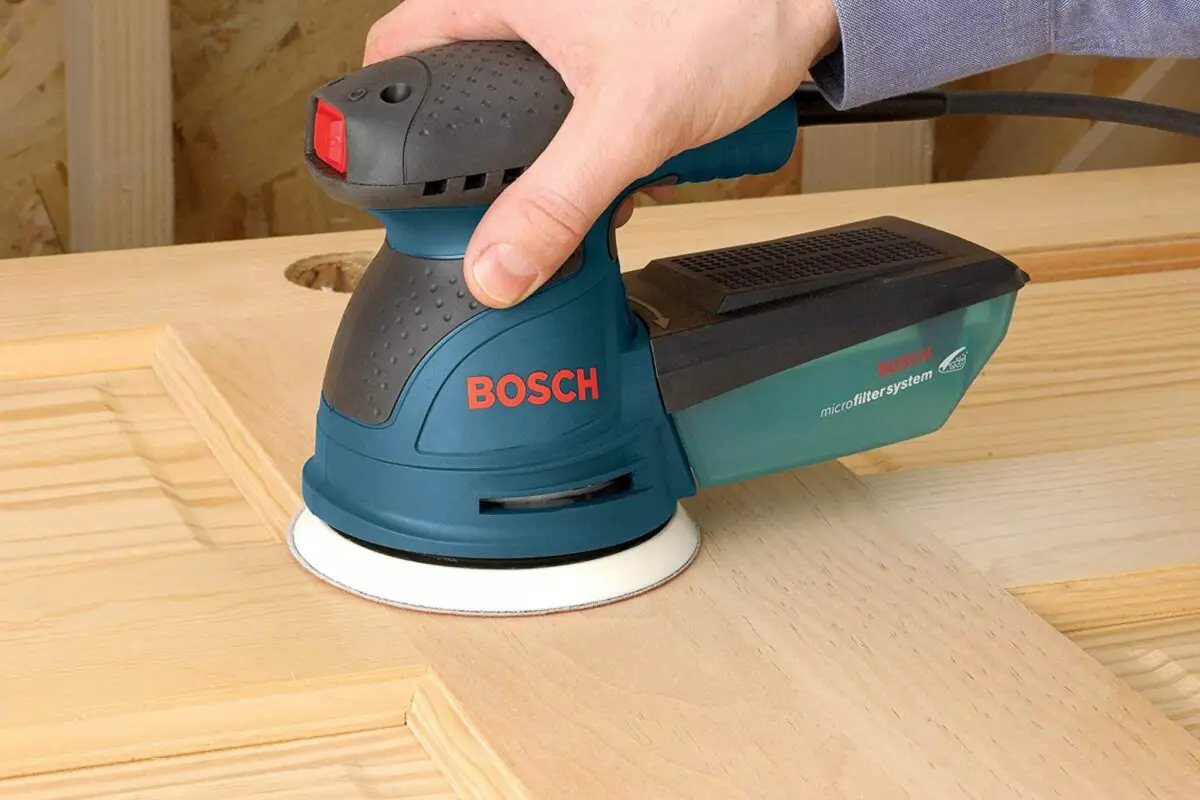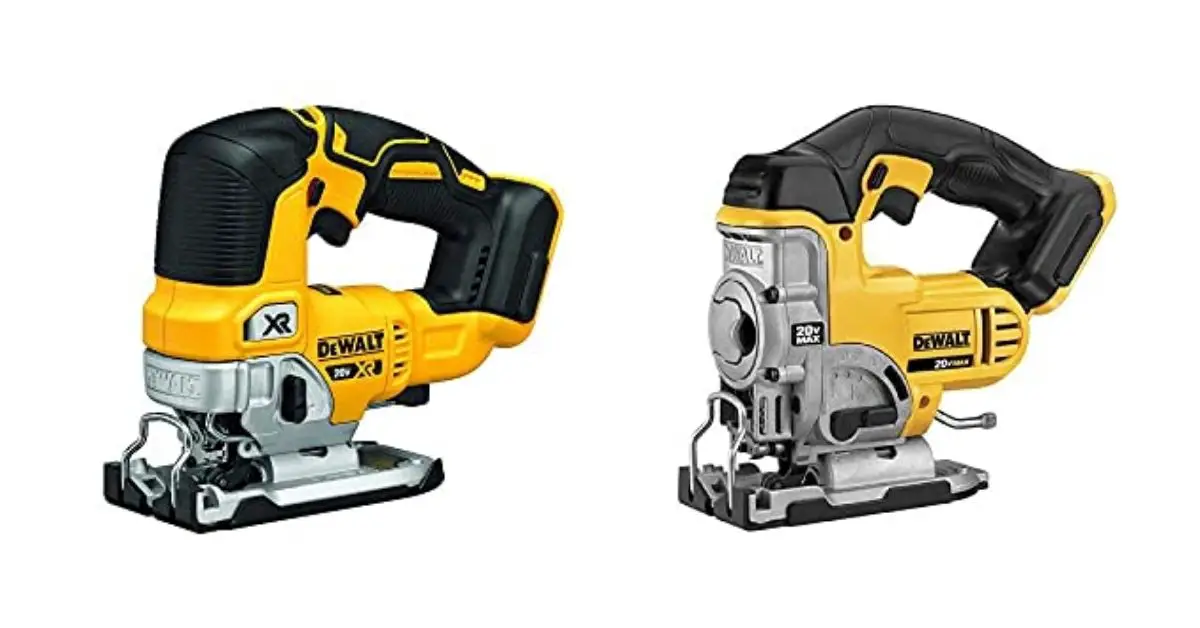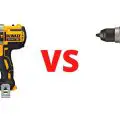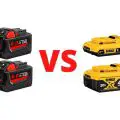Power Tools
Best Sander for Decks
If you’re looking for a quick answer, here it is: the best sander for deck refinishing has to be a belt sander. Of course, not just any belt sander will do the trick. But if the average deck size is anything to go by, I reckon this is a job for powerful tools, and no other sander can perform nearly as powerfully as a proper belt sander.
Now that that’s out of the way, we can narrow down and ask, “Exactly which belt sander should I use to refinish my deck?”
When I first asked myself that question, I only had a rough idea of what a belt sander should do. Researching online and talking to a few of my woodworker buddies soon revealed that, like with any tool, finding the best sander for deck refinishing requires a bit of knowledge, specifically, the features that make some sanders outperform others.
That led to the creation of the following buying guide for deck sanders.
How to Buy the Right Deck Sander
You already know what you need a sander for, and that’s a huge step in the right direction. Now all that’s left is figuring out which features are a must-have, which ones are nice to have, and which ones you can do without.
Types of Belt Sanders
First of all, I implore you not to get these wires crossed:
Stationary belt sanders are not ideal for deck refinishing. The reason is obvious – they work from a fixed position, so you must bring the wood to the sander. You can’t do that with a deck now, can you?
Handheld belt sanders are where your focus should be. They have plenty of sanding power despite being so portable that you can use them with one hand.
Always get a handheld belt sander, especially if you’re thinking beyond your deck refinishing project. I’d recommend a stationary belt sander only if you run a wood processing outfit; that’s the only way to get the most use from those massive machines.
Important Features
Size
Belt sanders generally fall into one of two sizes: 4 x 24 and 3 x 21 inches. When working on my deck, I thought bigger was better since I was dealing with a large surface and reasoned that a larger sander would require fewer passes to complete the job.
While I was not wrong, there is a strong case for 3 x 21-inch belt sanders. They’re easier to maneuver, better in tight spaces, and suitable for a wider range of projects.
I feel that smaller sanders are faster and more efficient, even though they don’t necessarily perform better. Chalk it down to better control and, therefore, less hand fatigue, which can make you feel like you’re barely working.
Speed
Variable speed belt sanders are a class above single-speed sander. At least, that’s what I believe. If your belt sander only comes with the one-speed setting, you’re more likely to feel limited at some point.
There are two types of variable speed sanders: those with fixed speed settings and those with a variable speed dial. While the former is better than any single-speed sander, the latter affords you a wider selection of speeds, which allows you to fine-tune the tool to suit various materials.
Power
You don’t need an awful lot of power to sand. Even the most powerful belt sanders rarely exceed 6 – 10 amps. That said, the better the motor, the more efficient the sander, and the more expensive the cost. In my opinion, having adjustable power is more important than having loads of it.
Weight
Weight is the biggest contributor to the tool’s ease of use and convenience. I actively avoid belt sanders that are too heavy or too light. However, my choice usually depends on the intended task.
When sanding overhead or vertically, it makes sense to go for something light and ergonomic, lest you risk hand fatigue and injury. However, I highly recommend getting a heavier belt sander for deck refinishing. A heavy belt sander can be really handy when sanding horizontally, especially if the deck boards are misaligned.
Generally, they can weigh anywhere between 5 and 15 pounds.
Dust collection
Belt sanders produce a lot of fine wood dust, which can be hazardous to your health if inhaled for too long. I don’t recommend using one without a decent dust collector, even if you wear a protective mask.
The Best Sanders I’ve Used This Year
Makita 9903 Belt Sander (3” x 21”)
The first time I used the Makita 9903 was right after my high-torque Porter-Cable developed irreparable issues. Coming from tremendous torque to this lightweight tool initially made me think I had settled for a light-duty sander. However, a few minutes of sanding an oak deck left me speechless – it removes so much material despite having very little notable “pull.”
What also surprised me was how quiet it ran. According to the manufacturer, its maximum noise level is 85dB, just a few decibels above conversational noise. That’s despite housing an 8.8-amp motor with variable speed control between 690 – 1,440 ft. /min.
It also features a comfortable front grip, making it a joy to use. I highly recommend this belt sander for deck sanding, but it’s good for applications beyond that.
Metabo HPT Belt Sander (3” x 21”)
The main reason I would recommend this over the Makita 9903 is it offers greater visibility due to sporting a clear front cover. Other than that, they’re pretty well-matched in most aspects.
The Metabo has a 9-amp motor with a variable speed dial at the base. Like the Makita, it has a flush surface, which is necessary for even sanding, and a dust collection port that connects easily with most collection bags.
Although it is relatively cheap, the fact that it comes with a 5-year warranty tells you that it can hold its own against tough sanding jobs. I see no reason why this wouldn’t make an excellent buy.
Makita 9403 Belt Sander(4” x 24”)
Even though I’m not the biggest fan of sanders this size, something about the 9403 forces you to reconsider. It could be the low noise output, the comfortably large front grip, or the labyrinth construction that ensures the bearings and motor against damage from dust and debris damage.
Regardless, its 4-inch-wide belt sands at a fixed speed of 1,640 ft. /min and runs at a relatively quiet 84dB. The tool weighs just over 15 pounds; it does very well as a horizontal sander.
However, we can’t ignore the single-speed motor and the slightly more unwieldy size, even with the inclusion of a 360-degree-swiveling dust collection bag.
Why You Should Trust Us
At Woodworking Tool Guide, we know one size doesn't fit all! We cater to every woodworker, from beginner to pro, with insights and recommendations tailored to your skill level, project needs, and budget. We take the guesswork out of choosing the right tools, whether you're tackling your first crafting a masterpiece for the ages. So grab your chisel, join our community, and let's build something amazing together!
Woodworking Tool Guide wasn't just born, it sprouted from a seed of passion for the craft. What started as a joyful exploration blossomed into a trusted online haven for fellow enthusiasts like you. We pour our love into meticulously chosen review selections, meticulous hands-on testing, and lab-backed insights, all to empower you with reliable, comprehensive information you can build on. So, grab your tools, trust our guidance, and let's build something beautiful together!
Passion-Driven Expertise
Our journey started with a shared love for woodworking. The team behind the Woodworking Tool Guide is comprised of individuals who are not just writers but passionate woodworkers themselves. This shared enthusiasm ensures that our content is crafted with a deep understanding of the craft and an authentic appreciation for quality tools.
Top Tool Guides Online
Woodworking Tool Guide has rapidly ascended to become one of the premier online destinations for tool guidance. Our commitment to excellence and the accuracy of our information has positioned us as a reliable source for both beginners and seasoned woodworkers seeking trustworthy advice on the best tools for their projects.
User-Centric Approach
Our content caters to every woodworker, from rookies just starting out to seasoned pros tackling intricate projects. We tailor our insights and recommendations to your skill level, project needs, and budget, ensuring you find the perfect tools to match your unique woodworking journey. So step into your workshop, grab your tool belt, and let Woodworking Tool Guide be your trusted companion as you craft your masterpieces.
Continuous Support and Innovation
Woodworking is an ever-evolving craft, and so is our commitment to supporting you. We are dedicated to bringing you the latest information on woodworking tools, techniques, and trends. Our team is actively working to expand our content and bring you more valuable insights, ensuring that you stay well-informed in your woodworking adventure.
Hands-On Experience
Ditch the endless research rabbit hole! At Woodworking Tool Guide, we believe in actionable advice, not armchair analysis. We get our hands dirty, putting every tool through its paces in real-world woodworking scenarios. Whether it's the precision of a table saw, the versatility of a router, or the tactile satisfaction of a handplane, we test for performance, durability, and user-friendliness. No more sifting through dry specs – we deliver practical insights you can trust to transform your woodworking dreams into reality.
Woodworking Tool Guide isn't just a review site, it's your trusted companion on the sawdust-filled path to woodworking mastery. Our expert team, led by veteran David Jones, meticulously tests and explains tools in terms you understand. We cut through the jargon, bias, and confusion with real-world insights and honest evaluations. Join our passionate community, where decades of experience, cutting-edge knowledge, and shared love for the craft come together to guide you every step of the way. So grab your chisel, buckle up, and let's embark on this exciting woodworking adventure, together!








